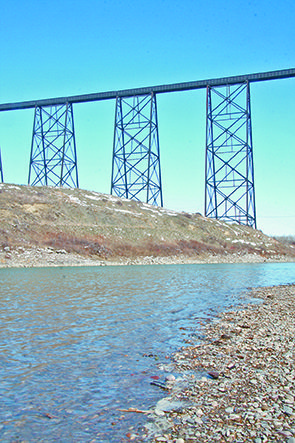A university augments education and knowledge, but in the case of the Oldman River, the University of Leth-bridge and its environs also augment the number of nutrients, coliforms and pesticides in the water.
Claudia Sheedy, a researcher with Agriculture Canada in Lethbridge, said researchers have no explanation for the higher concentration of contaminants found in the outflow below the university.
The storm water flowing into the river at that point draws water from a wider area on the city’s west side, so outflow does not come exclusively from the university campus.
Read Also

Stacking Canada up on gene editing livestock
Canada may want to gauge how Argentina and other countries have approached gene editing in livestock and what that has meant for local innovation.
Speaking to a tour group organized Oct. 3 by the Oldman Watershed Council, Sheedy explained the results from year two of a three-year study into how the city affects water quality in the Oldman River.
The OWC, city, Lethbridge College and Ag Canada are collaborating on the study.
Researchers test storm water outflows once a month from nine different urban sites during the summer. They measure pesticides, nutrient loads and bacteria.
One site upstream of the city and another one downstream are also sampled.
Nutrient tests showed good news this year in terms of nitrogen and phosphorus, Sheedy said.
“On average in 2013, we had less of all these nutrients in the outfalls compared to 2012, apart from ammonia.”
But once again, the outflow below the university had higher nutrient loads, as well as more pesticides and bacteria compared to other sites.
Sheedy said results so far in this study are similar to findings from the mid 2000s.
Last year, tests detected 10 different pesticides among all the samples from all outflows. This year, 16 different pesticides were identified, most of them herbicides commonly used for broadleaf control and lawn care.
On average, Sheedy said three compounds per sample are found. Researchers test for 104 different pesticides. Pesticide levels were lowest in samples upstream of the city.
She said many city dwellers think water in storm drains goes through the city’s water treatment plant. In fact, it goes into the river without treatment.
















